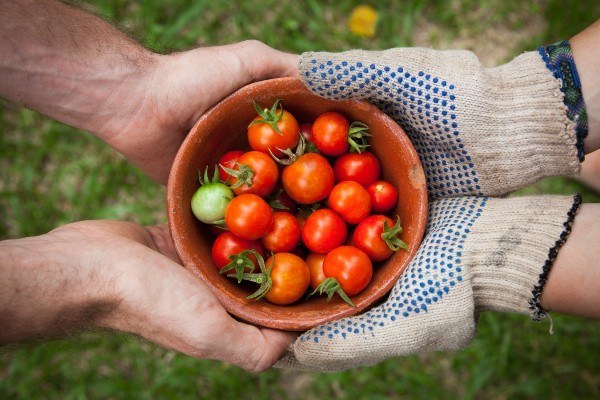
A Garden for Everyone
In one of my previous posts, Top 10 gardening Trends for 2021, I discuss the massive growth in popularity that gardening is currently experiencing. More people than ever are discovering the benefits of gardening and are getting in on the trend.
The increased interest in gardening is excellent news, but what do you do if you live in an apartment or don't have land for a garden?
A popular, fun, and socially responsible
solution is a community garden.
A well-designed community garden will transform a local community with shared resources, growing fresh, healthy vegetables, and fruits. A community garden can make positive changes that will last.
What is a Community Garden?
A community garden is a piece of land that's set apart within a neighborhood. The land is gardened collectively by a group of people. It all simply begins with a person or a group of people who decide they want a community garden.
Community gardens consist of one individual plot or shared plots on private or public land. They can produce fruit and vegetables or consumption and plants for their attractive or decorative appearance.
Cost of a Community Garden
As of this post's writing, community gardens starting costs vary from $3,750 to $7,500. The costs of establishing a community garden may include contractors, insurance, city fees (maintenance), and water fees.
A large community garden (12 -acre or larger) can cost as much as $30,000, but on the other hand, that same garden can generate as much as $50,000 per year.
These expenses can vary significantly from garden to garden; however, you can expect a community garden's costs in a highly populated urban area to have higher operating costs than those in less populated areas.
Five types of Community Garden
Starting a Community Garden?
How a community garden is structured requires some careful consideration.
Some typical factors to contemplate when starting a community garden:
Individual Gardening
For instance, individual gardens are plots that are not shared. The plots are cared for by an individual who chooses what to grow and how to care for those crops.
Open Gardening
There typically will be no assigned plots with an open community garden, and volunteers can work on any part of the garden they choose.
There typically will be no assigned plots with an open community garden, and volunteers can work on any part of the garden they choose. They can also pick whatever vegetables they want to grow.
A group starting a community garden also needs to decide what they want to grow, just vegetables, fruits, and/or flowers. It is always good to plan on having several meetings to discuss what will populate the community garden and a schedule developed to determine if the work will be done communally or individually.
Above all, no matter what form the association takes, it is critical to have written rules to help keep order and peace in the garden. How detailed the guidelines are is highly dependent upon the participating gardeners. I recommend the less familiar the participants are and the more precise the rules should be to mitigate disagreements.
The following community garden rules and regulations are from New Jersey's South Branch Preserve. These are great rules to incorporate into your community garden guidelines.
Ways to Improve Your Community Garden?
Pros and cons of a Community Garden?
Pros:
Cons:
Your State - Your Garden
One of the best ways to learn about starting or joining a community garden is to contact successful gardens in your area.
I have researched all fifty states to identify resources in your state to help you get started. This list is in no way exhaustive but will, at the very least, help you get started.
Go Plant Something!
Being part of a community garden takes time but is well worth it in the long run. Hopefully, you can find an organization or garden in your city that inspires you. Even if your area doesn't have a robust gardening community, don't let that stop you from organizing one of your own.
See you in the garden!
If you enjoyed this post, check out our other gardening posts:
- Top 10 Gardening Trends for 2021: Shared Inspiration
- How to Dry Seeds: What & Why
- 15 Advantages of Drip Irrigation
- What is a Drought Tolerant Garden?
- Sheet Mulching: How to Build Soil & Save Water
- What is a Greywater System?
- Using a garden Planner

